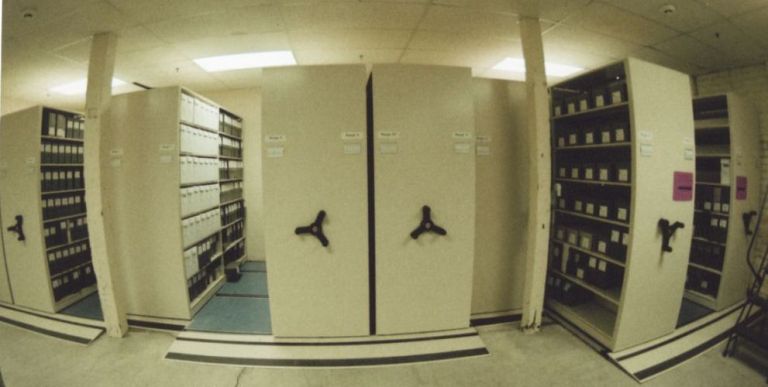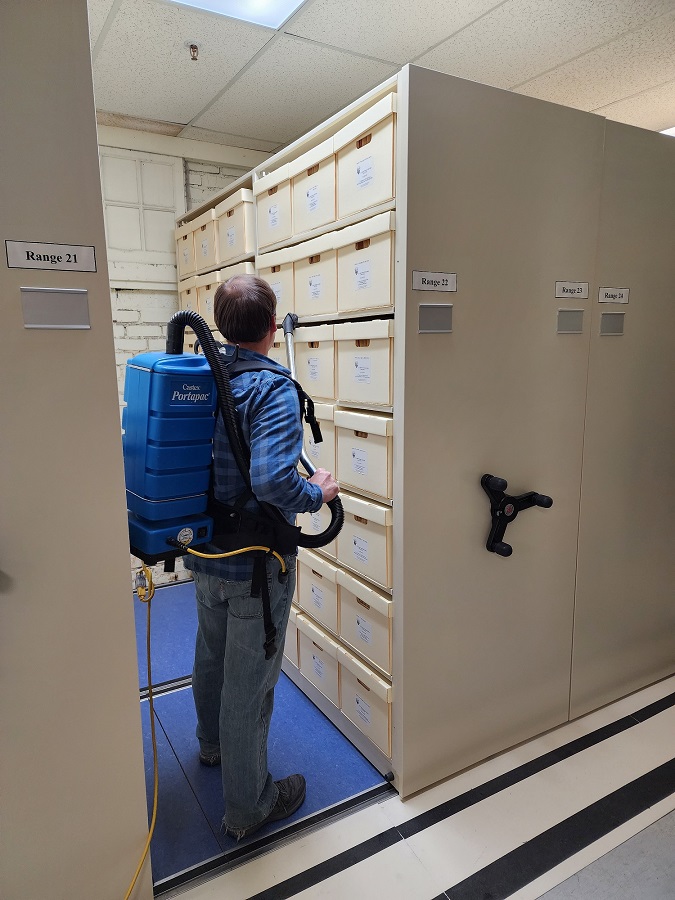 The task ahead seems straightforward, the room of boxes is well designed with space to maneuver, the ergonomic backpack hangs effortlessly on my shoulders, plugged in and ready. Silently, I muse about being a paper defender, an archival inside joke at its best. This backpack conjures images of those ghost hunting comedians from the movies. However, the adversary I confront is a pervasive force, hidden in the archives' recesses. It is omnipresent, adheres to surfaces, infiltrates every nook, and endures on any and all materials. Like a specter, it drifts on the air currents, through opening and closing doors, and past the buzz of dehumidifiers and air filters.
The task ahead seems straightforward, the room of boxes is well designed with space to maneuver, the ergonomic backpack hangs effortlessly on my shoulders, plugged in and ready. Silently, I muse about being a paper defender, an archival inside joke at its best. This backpack conjures images of those ghost hunting comedians from the movies. However, the adversary I confront is a pervasive force, hidden in the archives' recesses. It is omnipresent, adheres to surfaces, infiltrates every nook, and endures on any and all materials. Like a specter, it drifts on the air currents, through opening and closing doors, and past the buzz of dehumidifiers and air filters.Under the microscope, this enemy's true nature is exposed – sharp and intrusive, posing a significant threat to archival gems like paper. It digs into the fabric of the pages, promoting constant deterioration. Oils are deposited when handling artifacts and papers with bare hands, which attracts more of its friends creating supplemental damage. Once established, it's permanent; no restoration method can completely remove it, hence prevention is crucial.
In addition to constant removal and erecting physical barriers, we digitize the collection to minimize handling to keep items safely away from this known menace. But it doesn't always cause harm alone, it joins forces, makes alliances. Its prowess lies in how it interacts with relative humidity and light, accelerating decay in paper. Moreover, this adversary transports sulfur dioxide and nitrogen oxides, noxious agents that are detrimental to both museum and archival collections. It entices other pests, such as silverfish and moths, which can also cause extensive damage independently.
Here I stand, ready, armed with my HEPA-filtered vacuum, determined to eliminate all this dust. It's everywhere, but the knowledge of its threat fuels my persistence. Will I triumph? Can I save the collection from this relentless onslaught of dust? The odds seem against me, but I sweep on… just a simple duster of the archives.

